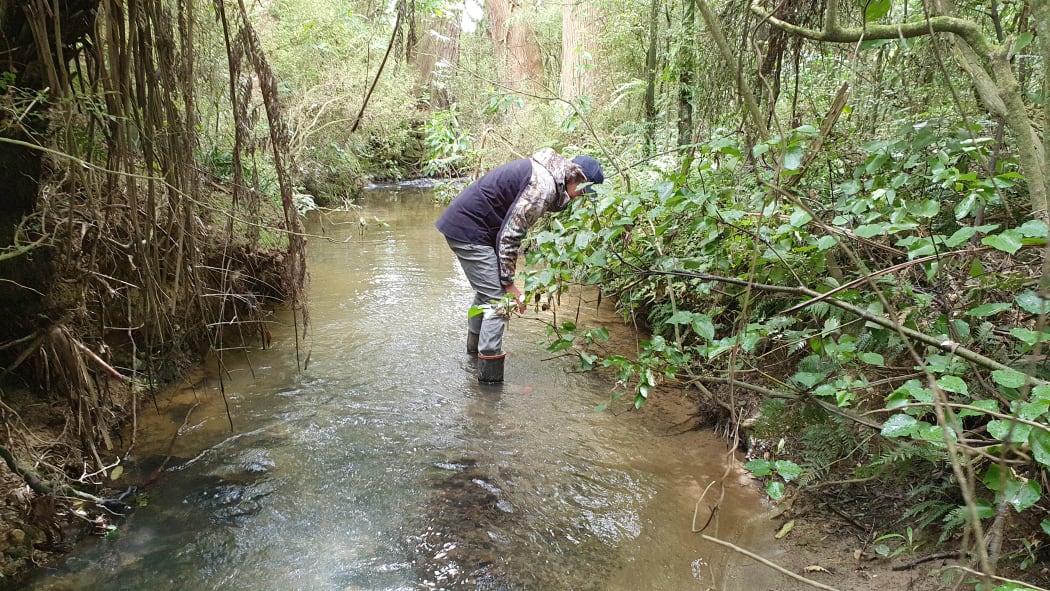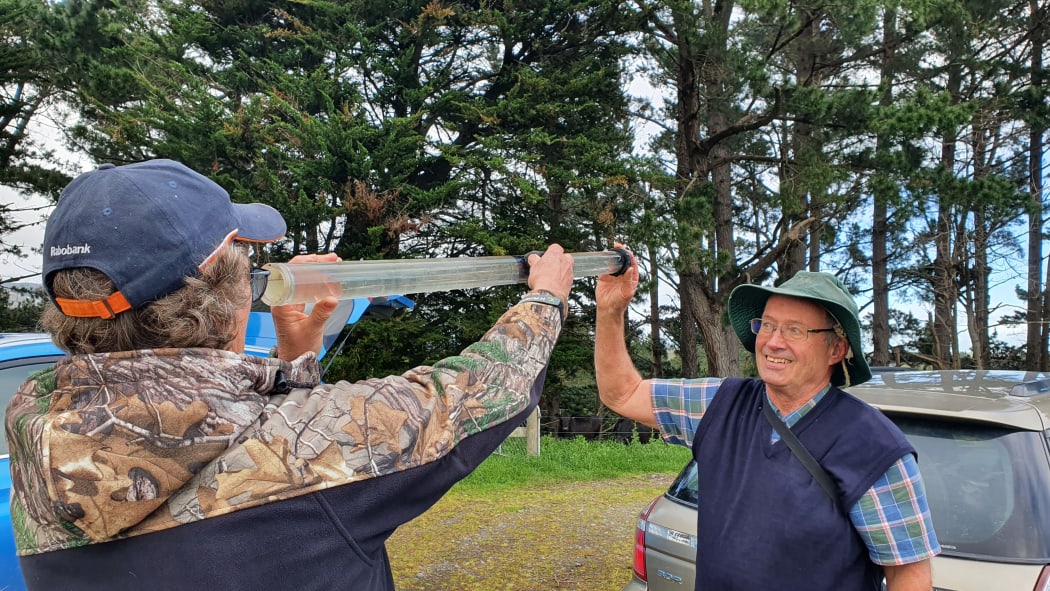
Christine looks for kakahi Photo: RNZ/Sally Round
Christine Finnigan is scanning the stream bed looking for kākahi.
"I found one and it's very much alive," she calls to fellow farmer Kim Bills and ag consultant Terry Parminter.
The freshwater mussels, especially baby ones, are a sign the creek is relatively healthy, even though it is in the middle of Bills' dairy block.
The stream flows through a lush stand of bush, which has been fenced off from the young bulls bellowing in the distance.
Earlier finds of kākahi and īnanga (native fish) motivated Finnigan, also a dairy farmer, to initiate the Nguturoa Catchment Group, a gathering of neighbouring sheep, beef and dairy farmers who monitor the streams and waterways flowing through their farms, southwest of Palmerston North. Parminter has been guiding them through the process as well as doing his own research.
The water from the area eventually ends up in the Manawatū River, so controlling excessive nutrients and sediment is vital.
Catchment groups like these are springing up around the country as more farmers try to understand the effect their operations have on waterways, especially with looming new rules and regulations.
To ensure they get reliable results, Finnigan and Parminter have a precise routine at each of the nine testing sites. They also take a sample of the water to be tested later in the lab as backup.

Christine Finnigan and Terry Parminter measure water clarity of the Nguturoa Stream Photo: RNZ/Sally Round
They are measuring for nitrate and phosphorous, sediment, conductivity and temperature and the speed at which the water flows, using a little yellow rubber duck, which Parminter has discovered is just as good as any specially made equipment.
He likes field tests because they give farmers an instantaneous figure which shows the impact of their farm management.
"They're like taking a laboratory out to the paddock."
After nearly two years of testing, they have discovered leaching has a much lesser effect on the stream than overland flow - or the wash of water over the land such as occurs after intense rainfall.
Fencing off and riparian planting can catch most of that flow, according to Parminter, and Finnigan says the thousands of trees she has planted alongside the stream, as well as the grass left long within the fence line, are already doing a good filtering job.
Finnigan's family has decided to forgo some of the productive land to improve the waterway further, and they are planning to build a stand-off area for the cows in case of really wet weather.
"These guys are already on the trajectory, addressing the area of concern but there'll be other dairy farms in New Zealand and other catchments where they've never looked at what is the main problem that needs to be addressed," Parminter says.

